
The Galápagos Project
Tomorrow Isn't Here–Revisiting the 1930s Dust Bowl | 2012

in between foraging sites, first raindrops and the Big .50 | 2012 | 2,000 hand crafted glass bison and base

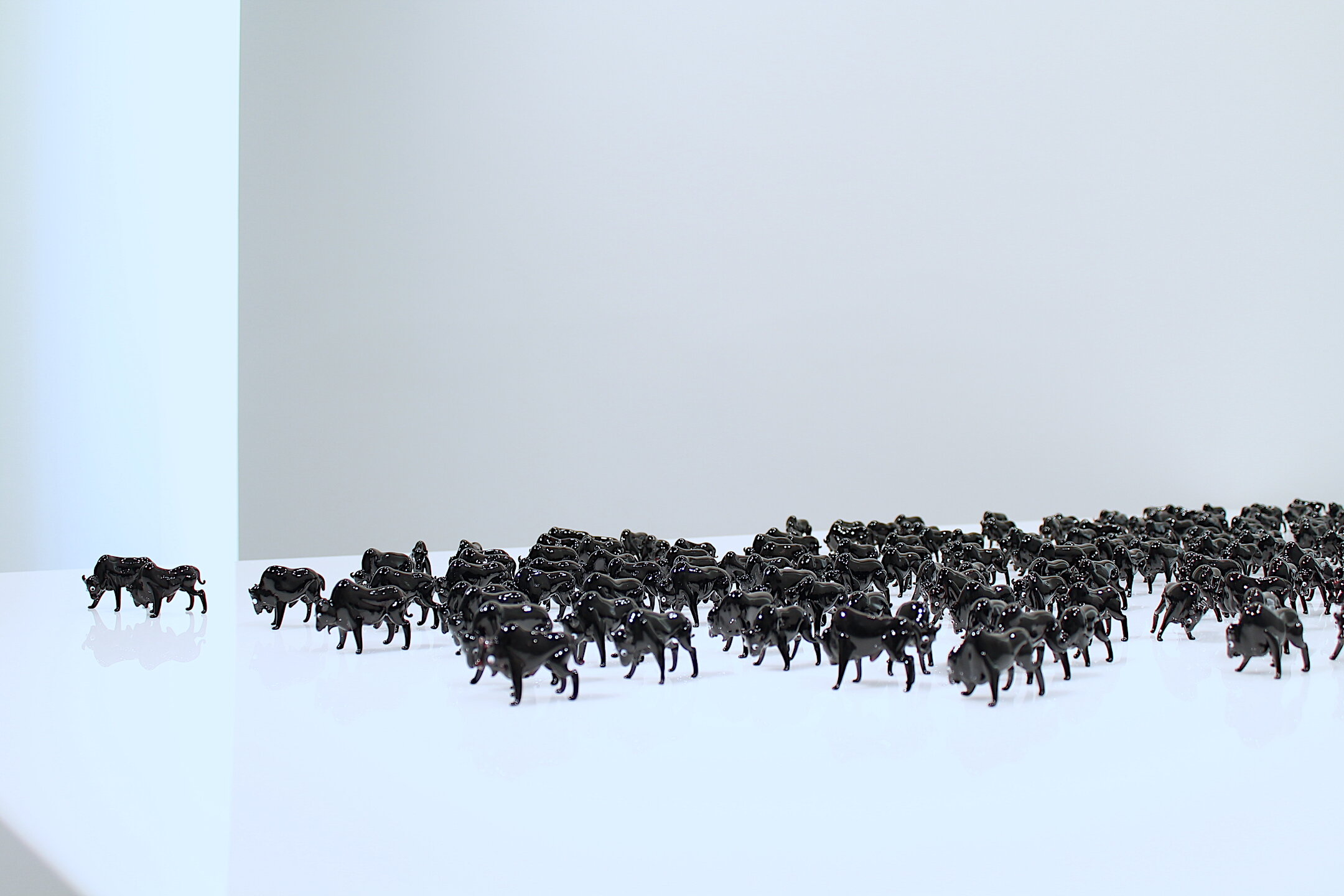

still from Thousand of Years Before and After | 2012 | HD, sound | 8:30 mins

still from Thousand of Years Before and After

still from The Great Simplicity | 2012 | HD, sound | 8:30 mins

cell phone haiku | 2012 | 42 x 30 cm

19th century European farm equipment and SiO2 #1–13 | 2012 | 42 x 30 cm each
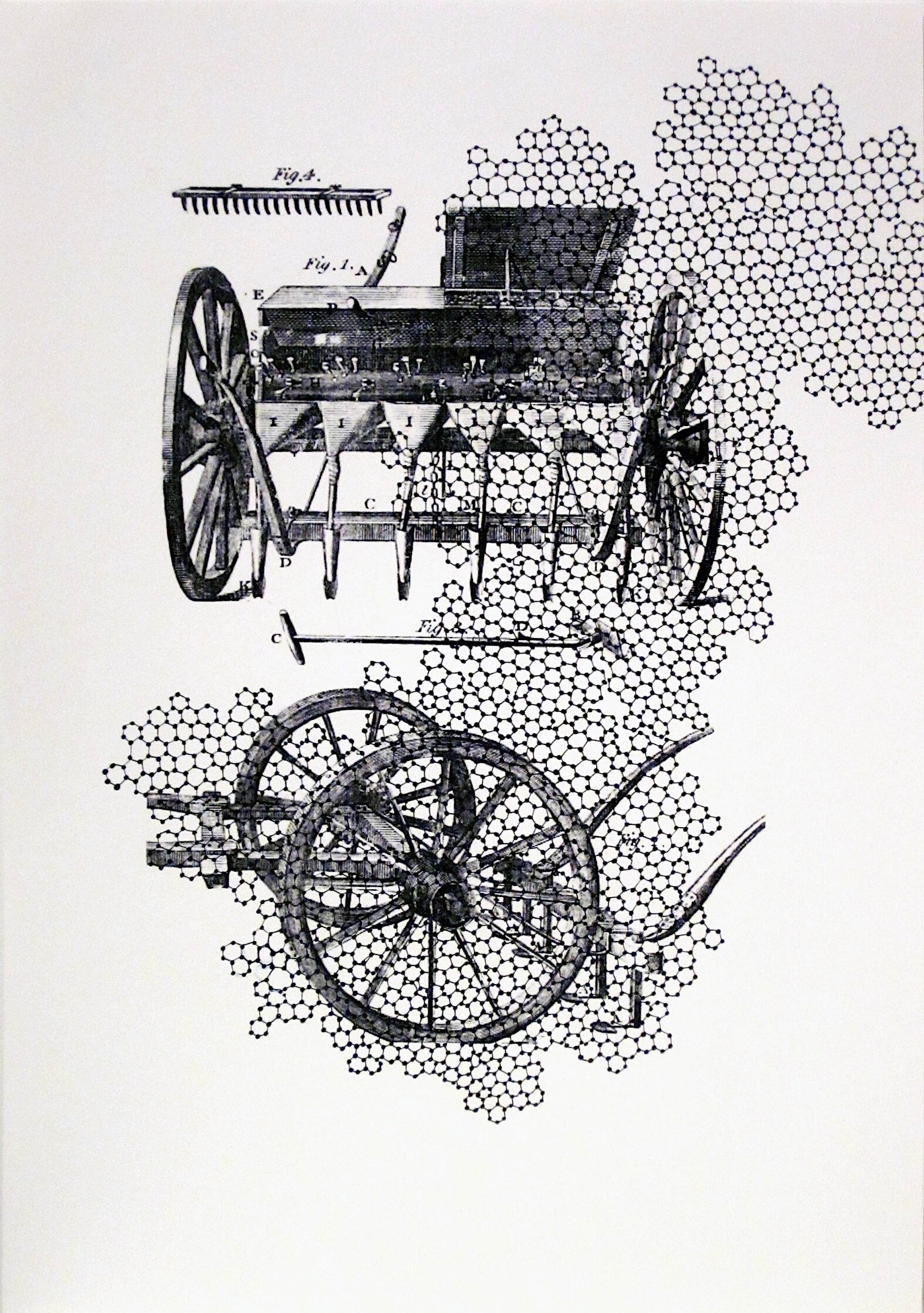





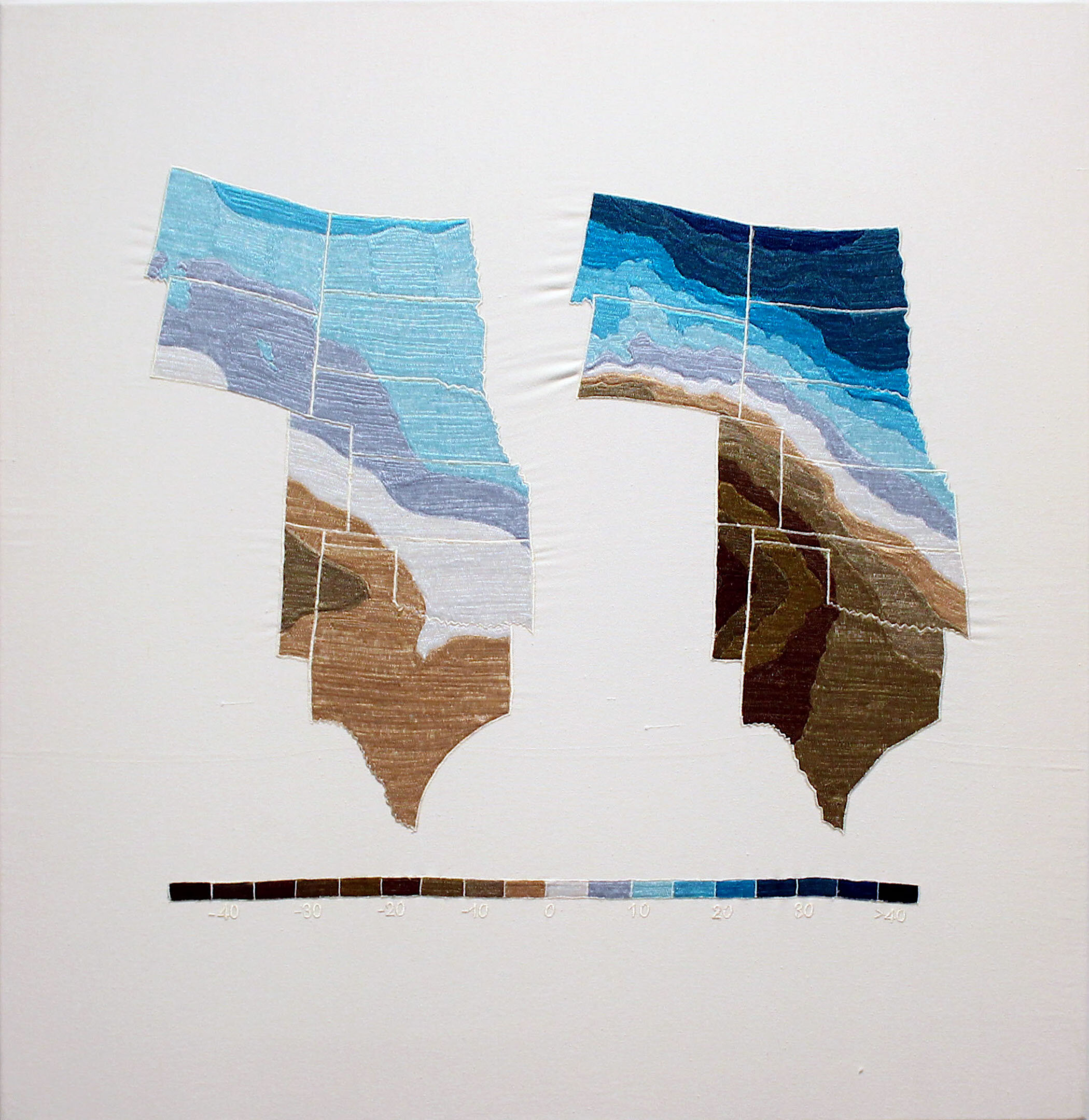
Projected Precipitation Change by 2080s-2090s from 1960-1979 baseline | 2012 | 66 x 71 cm
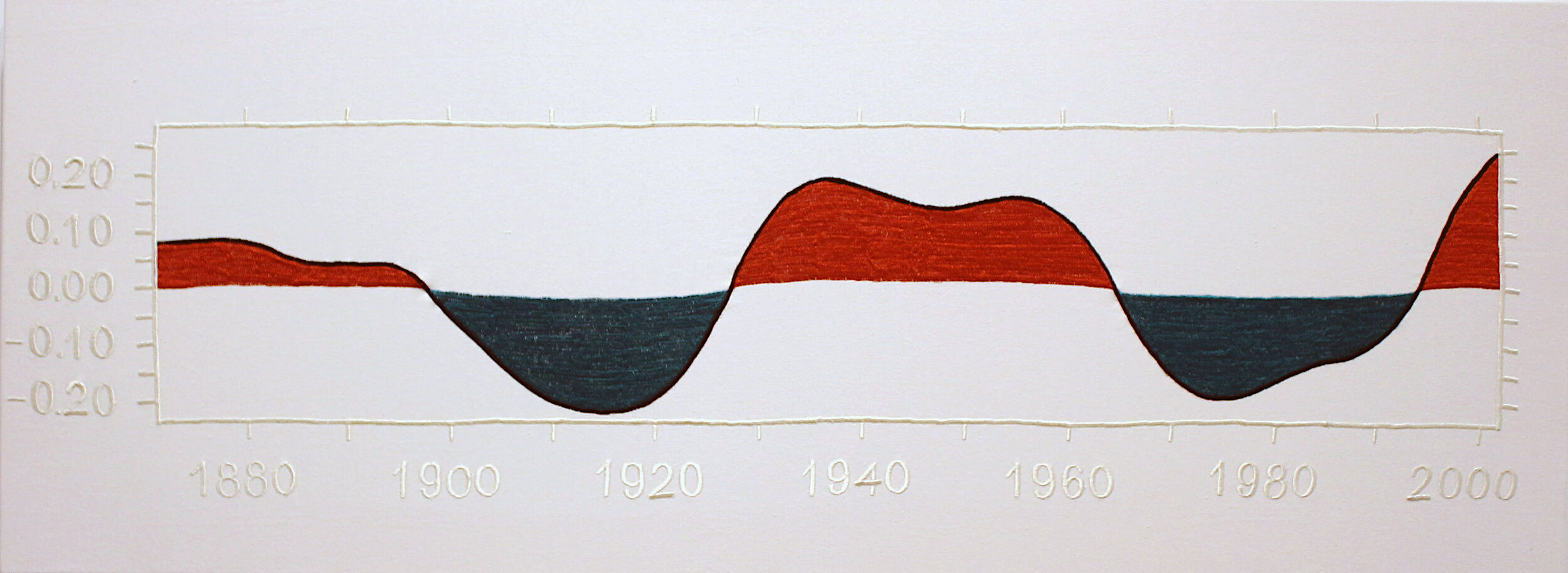
the Pacific Decadal Oscillation Index: 1900-2006 | 2012 | 66 x 122 cm

the Atlantic Multi-decadal Oscillation Index: 1899-2002 | 2012 | 45 ¾ x 122 cm
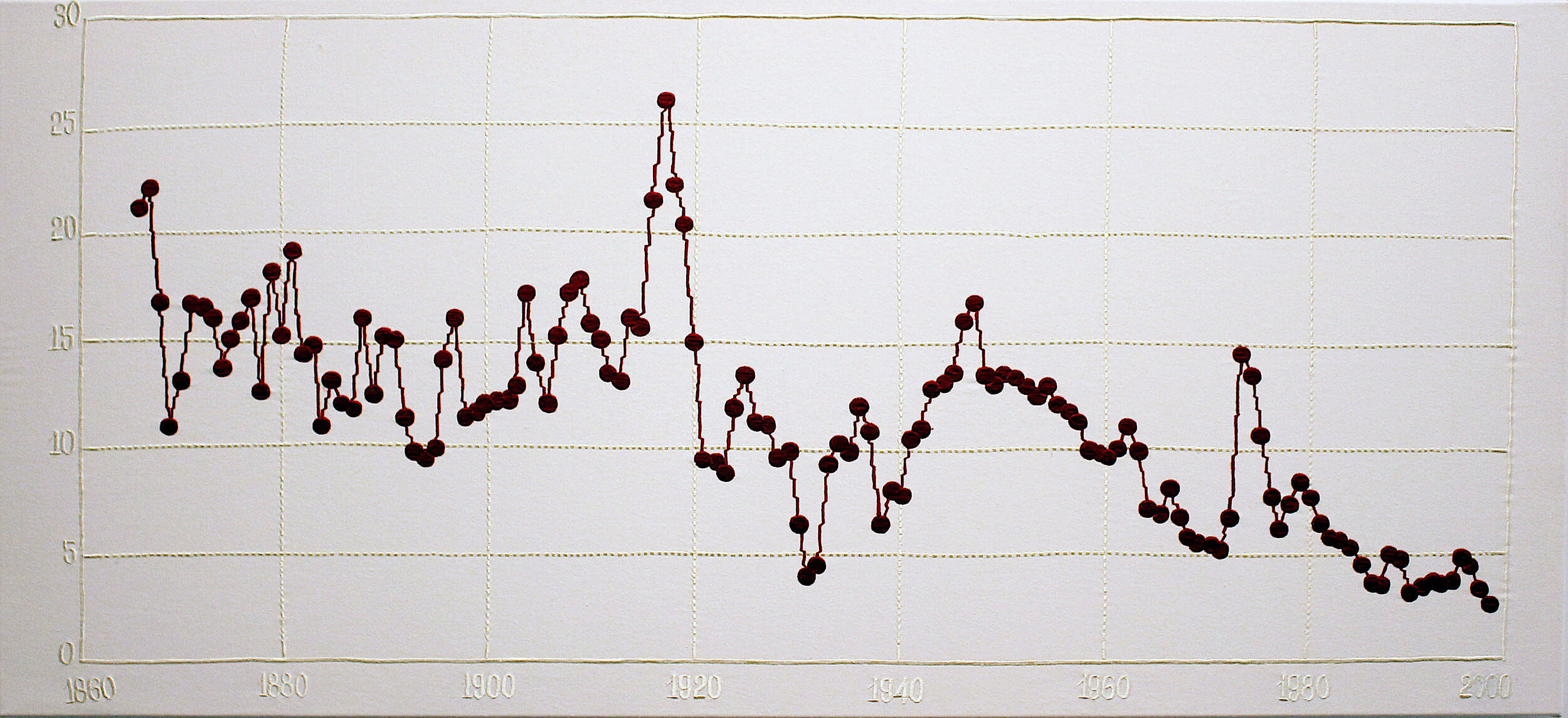
Wheat Price Plot: 1860-2000 | 2012 | 68 ½ x 142 cm
TOMORROW ISN’T HERE references the 1930s Dust Bowl that marked the decline of the Great Plains, an extensive flatland region in the U.S. and part of Canada. The Dust Bowl exemplifies the resulting effects of climate variability interacted with human activity: the weather patterns shifted in 1930, causing the Pacific Ocean to become cooler and the Atlantic warmer – the agricultural practice that 19th century European immigrants brought to the region coupled with the increasing mechanization of farm equipment had converted the native grassland to cropland, especially with the rising wheat price during WWI. The process destroyed the topsoil of the Great Plains and displaced the deep-rooted grasses that protected the soil from drought and wind erosion. With such misuse of land, inappropriate agricultural practices, extreme drought and high winds brought severe dust storms to the Southern Plains in 1930s; about 25 million hectares of land and crops were destroyed, while people and livestocks were killed in the choking dust. This led to a huge migration stream from the Dust Bowl counties, as well as those who came from other parts of Oklahoma, Texas, Arkansas, and Missouri: between 300,000-400,000 people migrated west during the Great Depression.
While the Galápagos Project is based on the natural world and anthropogenic disasters, within a documentary mediation on deindustrialization and agricultural desolation, it encompasses both human destruction and transformation, seeking insights into living on the brink of utter ruins. In reference to Walter Benjamin’s angel of history dashing into the future with his head turned back to the wreckage of progress, the video The Great Simplicity shows two men stomping through an abandoned modern amphitheater. The men frenetically and frantically circle each other while shouting undecipherable phrases of a mutated language, perhaps musing on the future ruins as envisioned and imagined by the artist. In the video Thousands of Years Before and After, the Dust Bowl displaced farmers are reimagined as post-apocalyptic human drifters, wandering in the immense grassland in search of a new dwelling place and means of survival.
In most components of Galápagos Project a mass migration takes place, whether it be tortoises, rabbits, buffalo, giraffes, or elephants. At times clustered in small formations clinging to angled surfaces of seemingly submerged partial structures, as in twigs, bones, rocks and the Giant Tortoise and falling blue sky, frozen raindrops, or moving en masse by the thousands across pristine ice surfaces (roaming with the dawn – snow drifts, rain falls, desert wind blows, 2012), or the momentary pausing of a herd of miniature black glass bison (TOMORROW ISN’T HERE, 2012), the viewer is transported into a fairy tale evoking the dawn of a prehistoric or post-apocalyptic age. Chung presents a veritable glass menagerie, fragile hordes of crystalline creatures touching our senses. The nomadic project appears to be a futile trajectory for these delicate beings, yet their collectivity signals strength and fortitude. While Chung’s Galápagos Project can be seen as an allegorical fantasy that imagines our future ruins, it also suggests a new beginning.
[Chung’s research and film shoot in Yamaguchi, Japan, was supported by Junko Tsukada, Tamami Nakamura, Keijiro Suzuki, and AIAV Akiyoshidai International Art Village.]
Related Exhibitions:
AFTER HOPE: Videos of Resistance | Asian Art Museum, San Francisco | 2021
Unquiet Harmony | Sheldon Art Museum, Lincoln, NE | 2019
This Land Is Whose Land? | Sun Valley Museum of Art, Idaho | 2018
IMPERMANENCIA | XIII Bienal de Cuenca, Ecuador | 2016
EMAP 2016: S.O.S. Save Our Souls | Ewha Womans University, Seoul | 2016
Encounter: Royal Academy in Asia | ICA Singapore | 2012
Tomorrow Isn't Here | Tyler Rollins Fine Art, NY | 2012